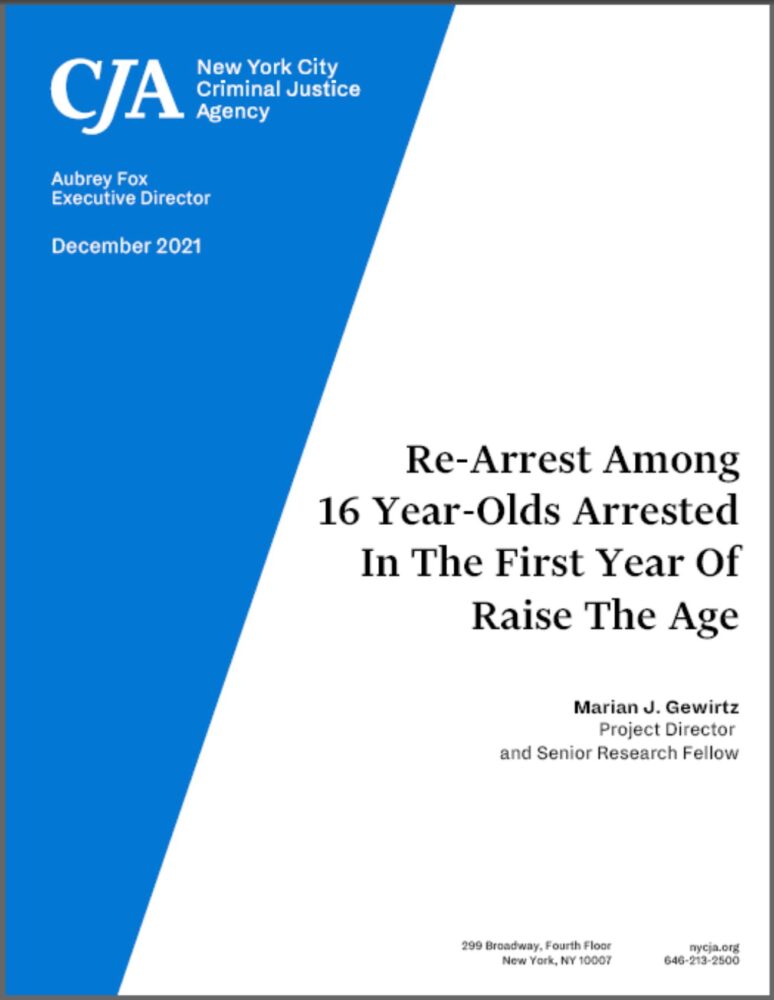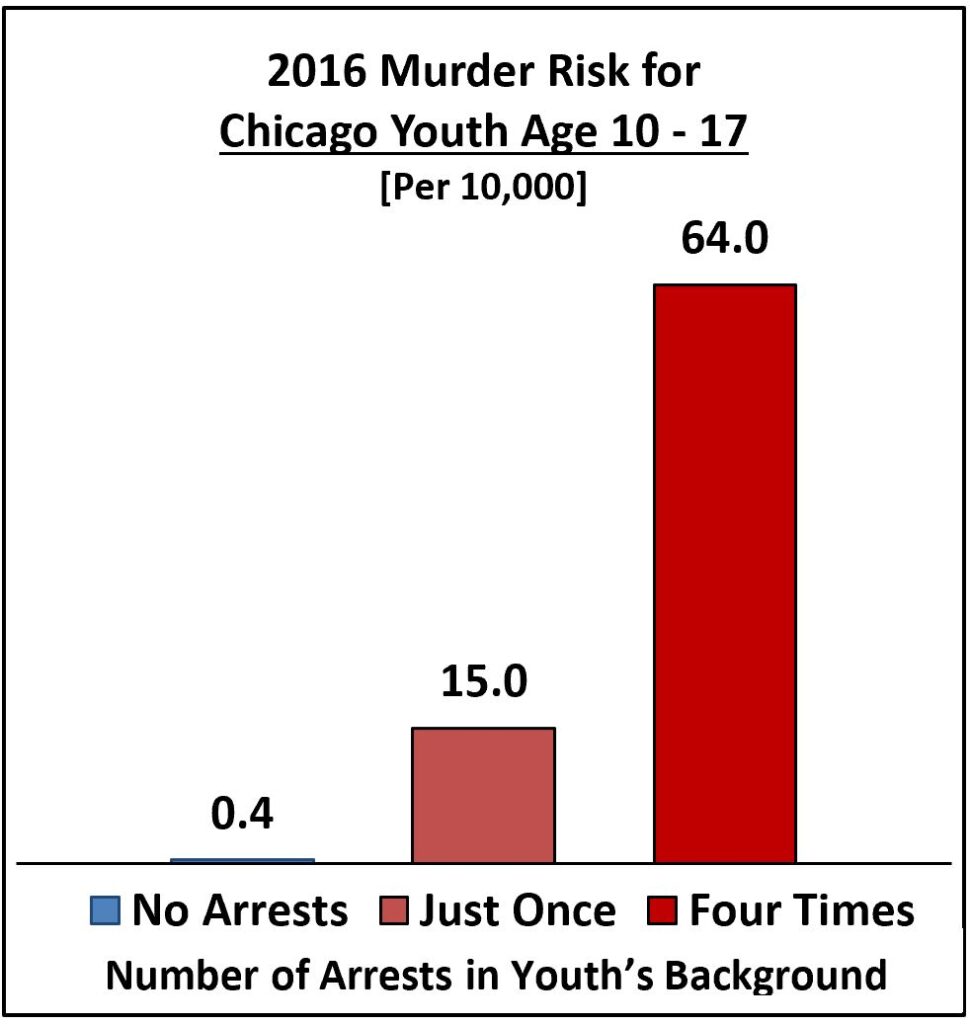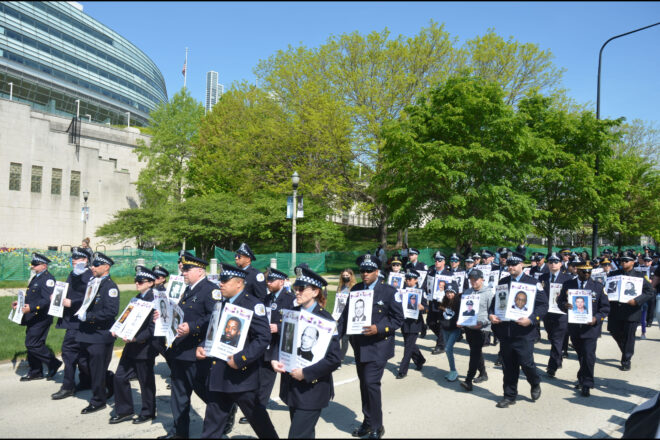Well not surprising actually. On 10 February 2022, Newsday posted their article, “Report: Nearly half of 16-year-olds arrested under RTA committed new crimes in NYC.” Some background. What is “RTA?” RTA, stands for “raise the age,” and concerns the oldest age at which an offender is considered a juvenile. RTA measures seek to push older and older individuals away from the criminal courts and under the jurisdiction of our juvenile (or family) courts. Many advocates have pushed for raising the juvenile court age to 21 or even older. These efforts tend to go hand-in-hand with the assertion that our juvenile courts are ineffective, and there should be a complete diversion from all formal court processes. The problem – absent a formal court response mechanism, the youth most at-risk of continued and deepening delinquency do not actually participate in needed interventions. Oh, and absent both accountability and intervention, they are at a substantially increased risk of violent crime victimization themselves. The Newsday article covered a research report from the New York City Criminal Justice Agency (CJA), a non-profit, pre-trial services and “court-involved” (aka offender) advocacy organization. Their report was released in December 2021.
Estimated reading time: 5 minutes
Looking at NYC Arrests of 16-Year-Olds After Initial RTA Implementation
The CJA report examined the arrests and re-arrests of 16-year-old offenders in New York City during the first year of New York State’s Raise the Age (RTA) legislation. Among the law’s stated intention was to reduce recidivism among “adolescent offenders.” The state law went into effect for 16-year-olds on October 1, 2018, and for 17-year-olds on October 1, 2019. The CJA study looked at the first year of RTA implementation from October 2018 through September 2019.

Drawing from the CJA’s summary of their report, here were their key findings:
- Nearly half of 16-year-olds arrested in the first year of RTA were re-arrested as of January 31, 2020 (48%).
- More than a third (35%) who were re-arrested for a felony.
- More than a quarter (27%) who were re-arrested for a violent felony offense.
CJA reported: “These rates of re-arrest are higher than the re-arrest rates for 16-year-olds arrested in the comparison period and higher than those for 17-year-olds in either period.” The comparison period was the prior twelve months of October 2017-September 2018.
The findings highlight once again that merely wishing for better outcomes does not bring them about.
The truth remains that by removing court intervention mechanisms there are consequences. As reported by Newsday, on 9 February 2022, New York City’s new mayor, Eric Adams, “repeated to state legislators in Albany his criticism, first voiced in January, that the law is allowing gangs to exploit youths to carry guns.”
The Delinquency and Violence Crime Victimization Link
Newsday also referenced criticism of New York’s RTA by Bronx District Attorney Darcel Clark. In November 2021, D.A. Clark was quoted as stating: “we are seeing 16- and 17-year-olds — and some even younger — with multiple gun cases that are not being held accountable when sent to Family Court. They are arrested for gun possession, released and without supervision, they graduate to a fatal shooting or they are killed by another youth with a gun.” Secure 1776 has previously reported on this exact delinquency and murder risk correlation observed in Chicago’s 2016 juvenile arrests and murder data.
While our founder was the commander of the Chicago Police Department’s Youth Investigations Division, he requested that the Crime Lab at the University of Chicago pull the following data – knowing if the police said it alone it would be completely ignored.

In 2016, the risk of homicide victimization for a Chicago youth age 17 and under, who had never been arrested, was 0.4 in 10,000.
After just one arrest, the murder risk increased to 15.0 in 10,000, which was 38 times higher than the youth who had never been arrested.
With four arrests, the risk was an astonishing 64.0 in 10,000, which was a disturbing 160 times higher than the Chicago youth that had never been arrested.
Increasingly what has been done is to create a system that fails to actually deliver intervention services, which nearly all agree are needed, to the youth involved in delinquency. As the weakened legal processes fail to hold them accountable their delinquency continues – and even escalates. Such a system weakens public safety, and it even leaves those youth at an increased risk of violent crime victimization. If the researchers in New York City look, they will likely find what was observed in Chicago. Delinquency is tied to violent crime victimization for those very same youth. Not intervening, and not holding them accountable for their actions fails them, their families, their future victims, and their communities.
It is not just an issue as the optimal age dividing line between the juvenile and criminal courts. Sending most 16 and 17-year-old offenders to juvenile court is the national norm. The question extends to a more fundamental issue. Does the system seek accountability for offending, non-compliance with intervention programming, and continued offending? Whether in juvenile or criminal courts, catch, release, and just wait for offending to stop on its own is a failed public policy. At Secure 1776, we continue to observe, the truth about consequences is that when the courts are not places of accountability, the consequences will be observed in the streets. Lawlessness follows, and lawless places are violent ones.
Additional Reading Recommendations on Public Safety in New York
Secure 1776 refers our followers to read “NewYork, NewYork: A Different Tune.” In this article, Thomas Lemmer examined two stories that emerged in the days leading up to Passover and Easter in 2021. Neither story evoked the glamour of the classic Frank Sinatra rendition of “New York, New York.” Both items provided an opportunity to further explore the “importance of us” in policing.
We are interested in your thoughts, and invite you to comment below.



No surprises here. The take away from this failed policy is pretty clear to most of us – when u don’t hold people accountable for their actions, they will repeat them. The policy eliminated accountability and punishment, thereby also eliminating deterrence. Liberals think raising the age will keep “kids” out of the criminal justice system. It does… but only until they become adults.
And — those policies raise the risk that they will pass through the morgue.